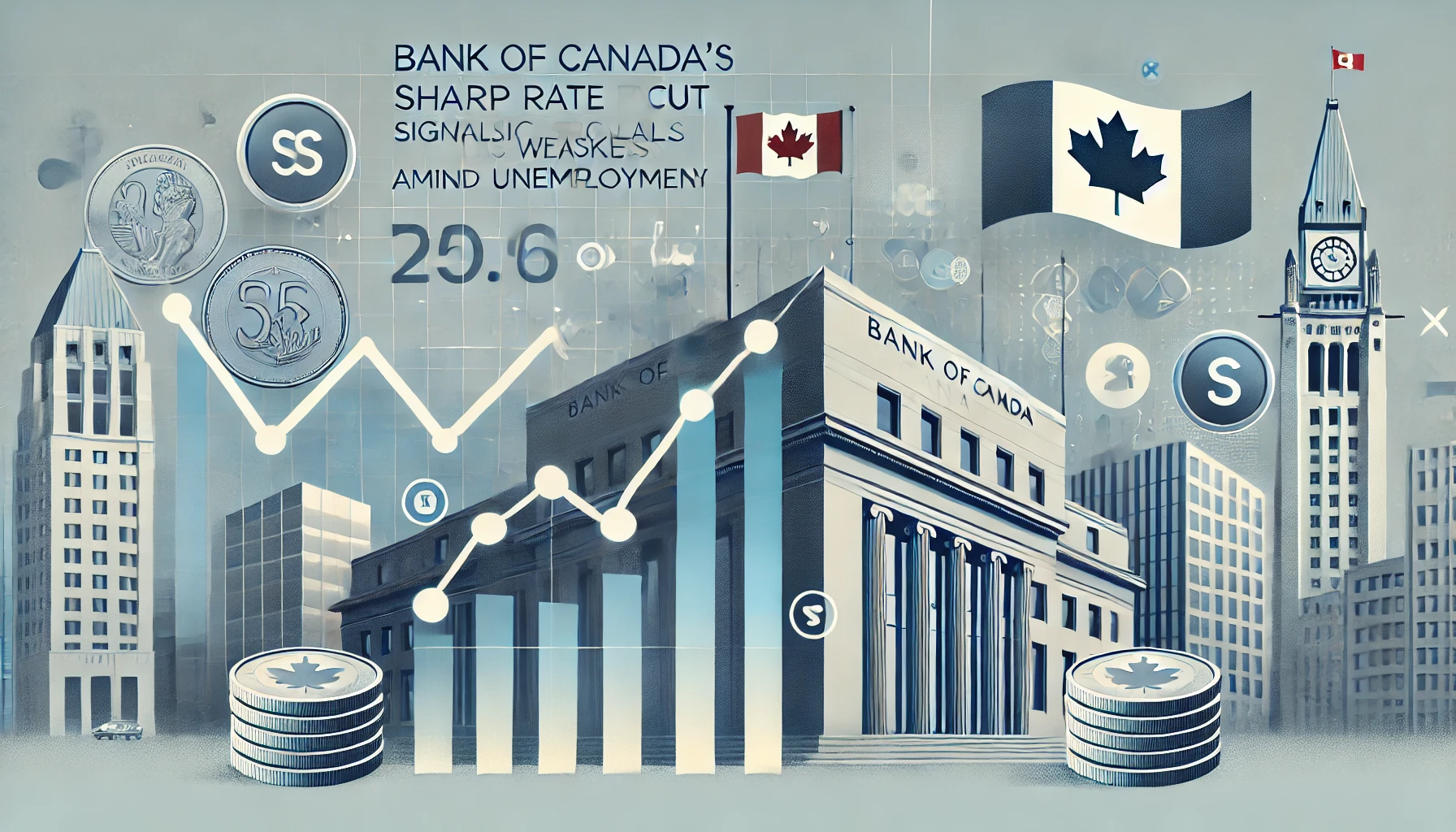In a surprising move, the Bank of Canada (BoC) has announced a significant 50 basis point cut in its overnight interest rate, lowering it to 3.25%, marking the fifth consecutive reduction. This decision comes in the wake of an acknowledgment that the Canadian economy is underperforming relative to previous forecasts, with unemployment rates climbing higher than anticipated.
Economy’s Unexpected Weakening
The BoC’s recent statement explicitly noted that the third quarter’s GDP growth was below expectations, signaling a broader slowdown in the economy. This acknowledgment of weaker economic performance and rising unemployment contrasts sharply with the narrative presented by the Canadian government. Prime Minister Justin Trudeau and Finance Minister Chrystia Freeland have consistently highlighted Canada’s economic resilience and growth potential, often citing investments in housing, dental care, and other social programs as signs of a robust economy.
However, the reality painted by the central bank’s actions suggests a different picture. The rate cut, aimed at boosting economic activity by making borrowing cheaper, indicates that the BoC sees significant slack in the economy. Unemployment has been on an upward trajectory, with recent data showing it at levels not seen since early this decade before the global health crisis. This rise in unemployment challenges the government’s portrayal of a thriving economic landscape.
A Disconnect Between Government Rhetoric and Economic Reality
The discrepancy between the BoC’s economic assessment and the government’s narrative has sparked criticism. Critics argue that the Liberal government, led by Trudeau and Freeland, might have been overly optimistic or even misleading in their public statements about Canada’s economic health. The focus on positive aspects like job creation, housing initiatives, and support for vulnerable Canadians has been significant, yet the broader economic indicators tell a story of a country grappling with economic challenges.
Economic analysts have pointed out that the high interest rates, which were at 5% earlier this year, have indeed strained household budgets, particularly for those with mortgages or variable-rate loans. The BoC’s decision to cut rates by 50 basis points, more than many had anticipated, underscores the urgency to stimulate economic activity.
Looking Forward
The BoC has indicated that future rate decisions will be made on a case-by-case basis, suggesting a cautious approach to further monetary policy easing. This strategy reflects the central bank’s intention to monitor economic developments closely rather than committing to a specific path of rate cuts. The removal of language from previous statements that hinted at additional rate reductions if the economy evolved according to forecasts further illustrates the uncertainty surrounding the economic outlook.
Moreover, the BoC’s mention of lower-than-expected GDP growth for the next year due to reductions in targeted immigration levels adds another layer of complexity to the economic forecast. Immigration has been a significant driver of population growth and, by extension, economic activity in Canada. A decrease in this area could further pressure economic growth, potentially exacerbating unemployment issues.
Political Implications
Politically, this economic news could be damaging for Trudeau’s Liberal government, especially as they navigate through a period where public sentiment is increasingly focused on the affordability of living and economic stability. The opposition, particularly the Conservatives, have already seized upon these developments to critique the government’s economic stewardship, arguing that the Liberals have not been forthright about the economic challenges facing Canadians.
In conclusion, the Bank of Canada’s recent rate cut and its accompanying narrative of economic underperformance paint a picture of a country at an economic crossroads. While the government continues to promote its agenda of growth and support, the central bank’s actions suggest a need for more aggressive intervention to spur economic activity. This discord between economic policy and political messaging may influence public perception and political outcomes in the coming months, setting the stage for a critical reassessment of Canada’s economic strategies.





